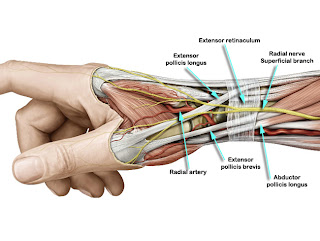EBP points regarding rehabilitation programs form reviews of Cochrane 2003-08 following lumbar disc surgery.
Although several rehabilitation programs, physical fitness programs, or protocols regarding instruction for patients to return to work after lumbar disc surgery have been suggested, little is known about the efficacy of these treatments, and there are still persistent fears of causing reinjury, reherniation, or instability.
Ostelo RW (2003) et al reviewed 13 studies 6 only ware of high quality from Cochrane only. The summary of this research is as follows:
Evidences:
1. For treatments that start 4 to 6 weeks postsurgery, there is strong evidence (level 1) that intensive exercise programs are more effective on functional status and faster return to work (short-term follow-up) as compared to mild exercise programs,
2. and there is strong evidence (level 1) that on long-term follow-up there is no difference between intensive exercise programs and mild exercise programs with regard to overall improvement.
3. For all other primary outcome measures for the comparison between intensive and mild exercise programs, there is conflicting evidence (level 3) with regard to long-term follow-up.
4. Furthermore, there is no strong evidence for the effectiveness of supervised training as compared to home exercises.
5. There is also no strong evidence for the effectiveness of multidisciplinary rehabilitation as compared to usual care.
6. There is limited evidence (level 3) that treatments in working populations that aim at return to work are more effective than usual care with regard to return to work.
7. Also, there is limited evidence (level 3) that low-tech and high-tech exercises, started more than 12 months postsurgery, are more effective in improving low-back functional status as compared to physical agents, joint manipulations, or no treatment.
8. Finally, there is no strong evidence for the effectiveness of any specific intervention when added to an exercise program, regardless of whether exercise programs start immediately postsurgery or later.
9. None of the investigated treatments seem harmful with regard to reherniation or reoperation.
Summay of conclusion is as follows:
There is no evidence that patients need to have their activities restricted after first-time lumbar disc surgery. There is strong evidence for intensive exercise programs (at least if started about 4-6 weeks postoperative) and no evidence they increase the reoperation rate. It is unclear what the exact content of postsurgery rehabilitation should be. Moreover, there are no studies that investigated whether active rehabilitation programs should start immediately postsurgery or possibly 4 to 6 weeks later.
The same authors Ostelo RW et al in 2008 reviewed RCTs only from Cochrane Library 2007, Issue 2. The conclusions is as follows:
Exercise programs starting four to six weeks post-surgery seem to lead to a faster decrease in pain and disability than no treatment. High intensity exercise programs seem to lead to a faster decrease in pain and disability than low intensity programs. There were no significant differences between supervised and home exercises for pain relief, disability, or global perceived effect. There is no evidence that active programs increase the re-operation rate after first-time lumbar surgery.
References: (reviews of Ostelo RW et al)
1. Spine. 2003 Feb 1;28(3):209-18.
2. Cochrane Database Syst Rev. 2008 Oct 8;(4):CD003007.


Comments
Post a Comment